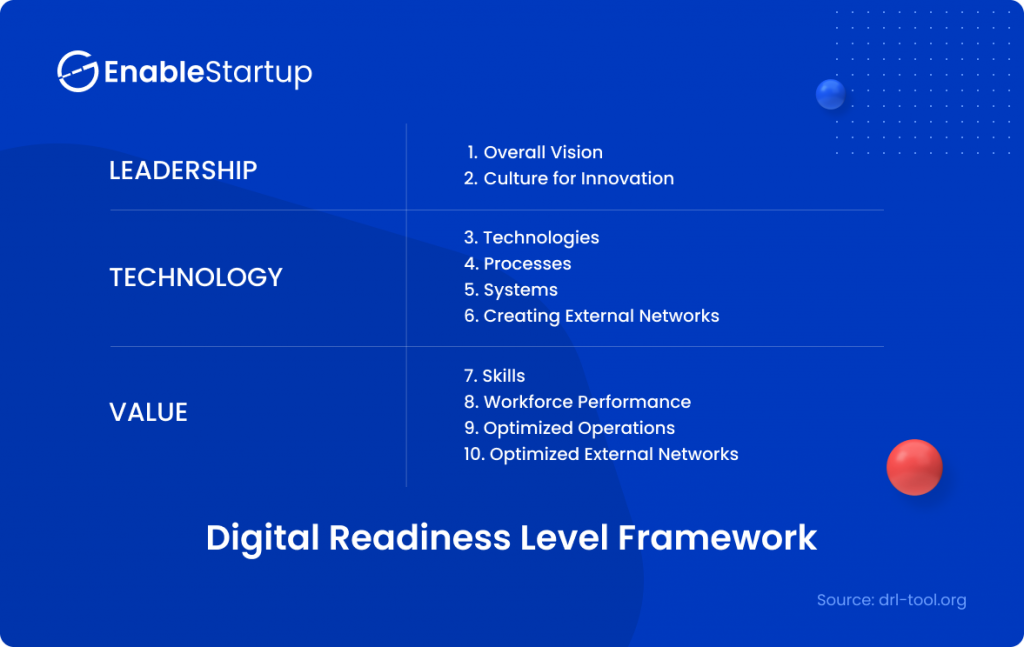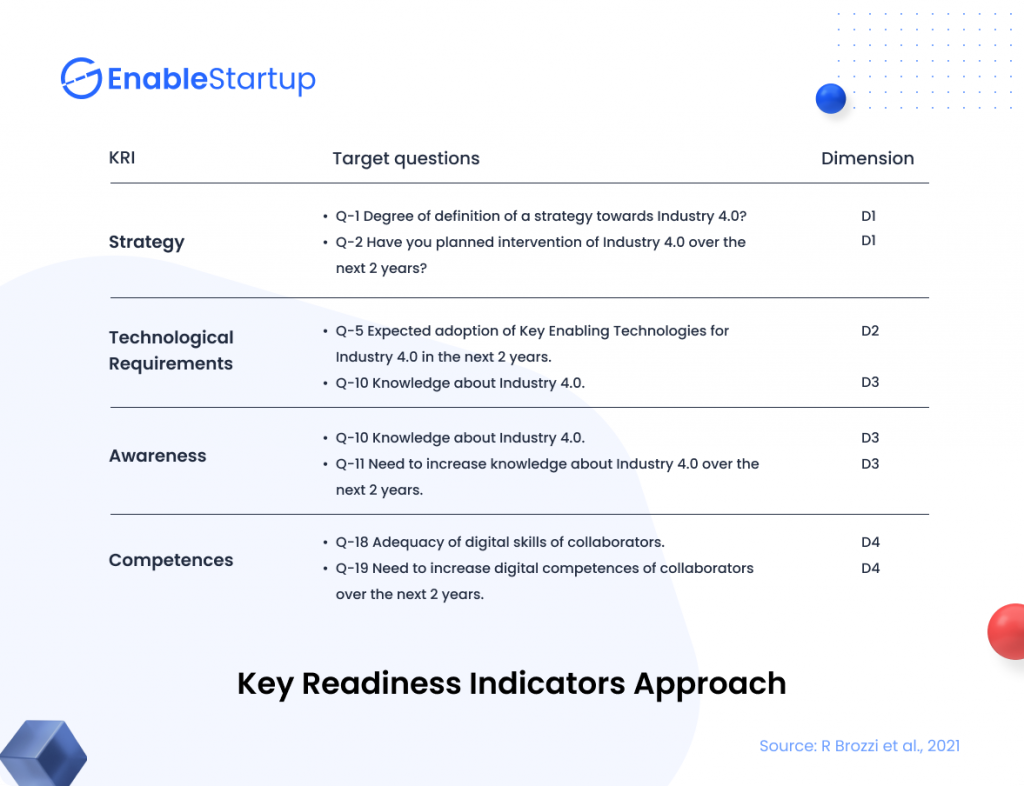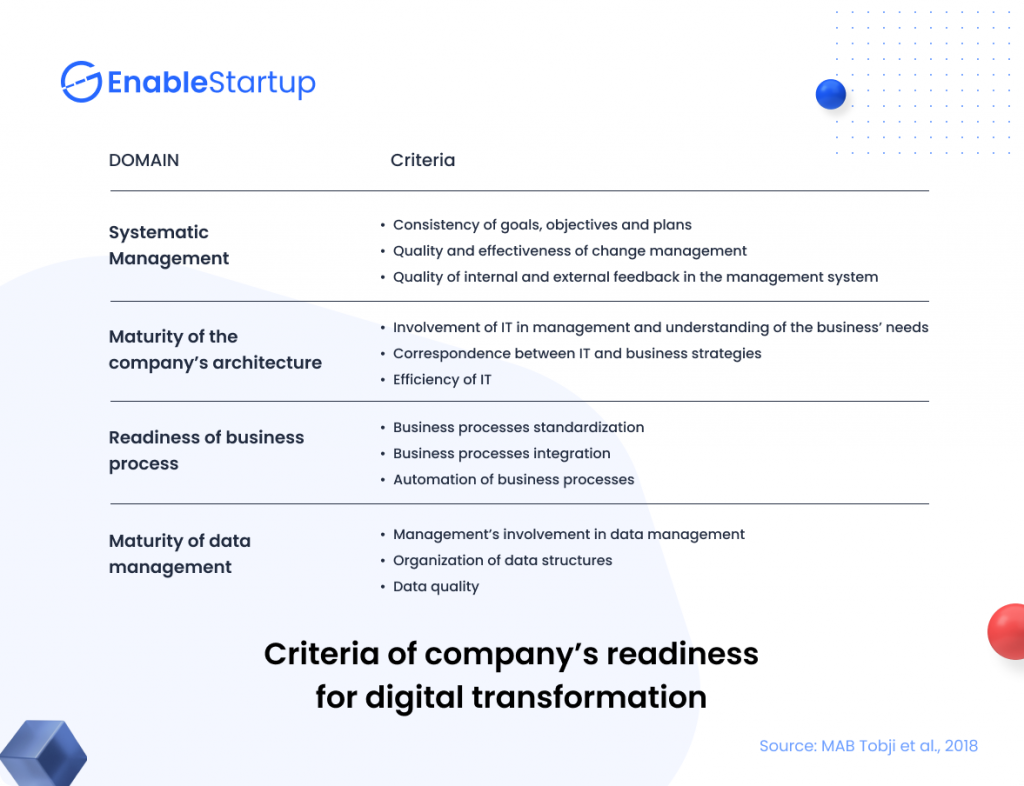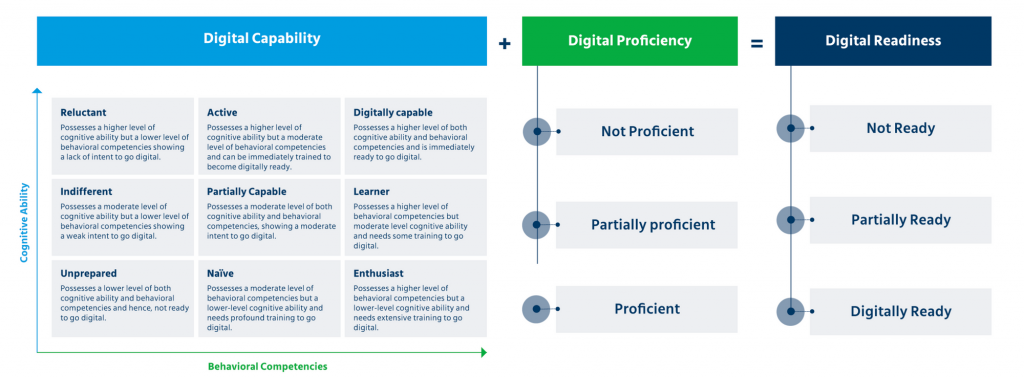It's no secret that digital transformation is not just a bandwagon but a new norm for today's businesses. While organizations are appreciating the significance of DX much more adequately than ever before, it's very often that they perceive such initiatives mostly about technology while overlooking digital readiness.
In reality, technology is just one among 3 pillars of a holistic digital transformation strategy, beside people and process. The incompetence in either pillar could results in under-performance of your initiatives, meaning waste of time, money, effort, not to mention the detrimental effect to decision makers' reputation.
In this article, we'll walk you through the most asked questions around the topic of digital readiness at both the individual level (a.k.a. user readiness) and the organizational level as a whole.
Digital Readiness - What does it mean?
Digital Readiness represents the readiness level of both organization and its workforce to transition into digitized workflows that are enabled by new technologies introduced during the digital transformation.
How important is user readiness in the success of a digital transformation initiative?
Rushing to either build or buy software without sufficiently preparing your employees, who will supposedly work with those tools on a daily basis, is just wrong. Indeed, this is one of the most common reasons why only 30% of digital transformation initiatives actually succeed versus 70% of all IT projects.
Aon's research shows that 84% of participants have listed being agile and change-ready as an important discussing topic on the table of their company. Also, organizations that can identify or create a motivating culture towards changes are 4 times more likely to succeed in their efforts to transform, compared to companies that underestimate this stage.
How can companies assess their readiness for digital transformations?
Assessing your organization's current status in term of digital capability should be the first and foremost task, prior to setting goals, creating roadmaps or adopting any software.
Apparently, this cannot be done within a rudimentary SWOT analysis or so, but rather requires thorough self-assessment methodologies that are tailored for the organization in question.
While the exact approaches are never the same, most available digital readiness self-assessment tools are making use of questionnaires and interviews that are built upon specific sets of criteria and indicators. After using such methods to collect relevant qualitative and quantitative data, certain analysis, evaluation and benchmarking frameworks will come in place to turn those data into insightful and actionable conclusions.
Let's take a look at two examples that apply the aforementioned approach and see what you can learn from them.
A/ Digital Readiness Level - DRL tool
DRL tool, first launched in 2018 as a joint effort of several UK organizations, aimed at helping companies to benchmark their readiness and prioritise their DX initiatives and compare their status with other companies of similar size, sector and region.
DRL tool consists of a 1-hour questionnaire, focusing on 3 different pillars namely Leadership, Technology, and Value, along with 10 different competencies, all in all providing a deep understanding about digital status of the company on each of them. The idea can be illustrated through the following framework:

B/ The KRI (Key Readiness Indicators)
In the same vein, the KRI approach is based on a self-assessment tool named “Digital Check” developed by the authors of this research paper. Quite similarly to the DRL tool, the KRI also allows companies, especially SMEs to evaluate their digital readiness level across different dimensions. Those are Strategy, Processes, Industry 4.0, Employees, Information Technology and Data Security, classified as D1, D2, D3, D4, D5 respectively in the following table, that summarizes the combination of interview questions used in KRI:

What are criteria for digital readiness?
After you have accomplished the assessment process, it would be necessary to reflect to what your ideal digital readiness level looks like, in order to determine next steps.
Again, every company should have its own set of criteria, based on their unique business strategy, expectations and resource capabilities. Even though, the framework below, proposed in the book called Digital Economy. Emerging Technologies and Business Innovation, can give a reference to companies who are attempting to set criteria for their digital transformation projects.

How to cultivate a change-ready culture in your business?
Everything starts with the process of listening to what the employees think and feel about the incoming digital changes. In other words, it boils down to the concept of "employee empathy".
At this step, the whole job is very similar to user research and product marketing in product development in general, in which your employees are target users and the future digital transformation initiatives are products.
With that mindset and approach, you can consider these stages to craft the best positioning for your digital transformations in your people's perspectives:
1. Identify digital readiness at the individual level
It would be ideal if everyone is on a same page towards the upcoming transformations. However, in most of the cases, that scenario doesn't happen. Instead, employees would have varying reactions and attitudes towards each of changes. This means the better you segment them, the more effective you will be in preparing them before imminent digital changes are in place.
So, the main question should be HOW are you going to proceed with this step of segmentation in the most efficient way possible?
Often, companies would leverage user research methods like interviews, observations, surveys, combining with some kinds of tests to assess employees' digital proficiency. Whatever approaches you use, the underlying rationale should be robust and convincing. We would recommend you to structure your data collection methods based on the following frameworks:
#1.
This relatively simple matrix looks at 2 dimensions of individuals' digital readiness, which are attitude and ability. Different levels within each dimension are then paired with each other to make up 3 segments of employees: Full change-ready, Ready but not capable, Capable but not ready, illustrated as below.

#2.
A more complex approach is referred to by Mercer | Mettl. This digital readiness assessment tool comprises 2 parts: Digital potential assessment & Digital proficiency assessment, that are respectively concerned with future capability and current proficiency of each individual within the organization.
The 1st part thus consists of 2 sub-tools: Mettl Personality Profiler (a kind of personality test to examine people' behavioral competencies) and Mettl Test for Abstract Reasoning (a non-verbal logic test to assess cognitive ability). These 2 tests would group participants into 9 boxes, corresponding to 9 levels of digital capacity. Whereas, the other part of the tool is a set of 25-30 MCQs that attempts to evaluate people' digital proficiency based on three subskills: information and data literacy, communication and collaboration, safety. The 3 levels of digital readiness are revealed down the line are Not Ready, Partially Ready and Digitally Ready, summarized in the diagram below.

Whatever tools you use, there are several ground rules to keep in mind during the segmentation process.
DOs
- Make use of open-ended questions
- Give your employees time to complete the test and the segmentation process. Nothing of good quality can be done overnight.
- Show a great willingness/eagerness of listening and understanding what your employees think and feel towards the digital changes
DON'Ts
- Adopt other companies' segmentation methods without carefully adjusting and adapting to your own case.
- Jump into assumptions. E.g, Young millennials employees are not necessarily digital natives by default. Indeed, people who can be considered as digital natives are those who embrace changes, relentlessly seek novelty, and are willing to think and act outside the box.
- Stay objective and realistic. Sometimes you need to admit the current not-yet-ready-to-change status of your organization, thereby having appropriate strategies to improve this status prior to implement desired digital transformations.
2. How to incentivize employees to develop their digital skillsets and mindset?
Along with organizing relevant trainings, management should understand employees' mentality and preference to make the most of these efforts. We suggest the top 3 principles that could help increasing the likelihood of employees' engagement in trainings and digital transformation initiatives as a whole:
- No extra-time commitment
- Changes and training are concrete and well communicated to all employees and beneficial for their current roles/jobs.
- Changes are explicitly associated with specific benefits for employees' personal and professional growth and ideally their remuneration.
Rounding off
Just like any other kinds of transformations, digital transformations can never done through shortcuts. To transform successfully, your organization needs to be ready from inside out. During these efforts, always put people front and center, adopt technologies for the sake of people, not the other way around. Such thorough preparations take time but would pay off and last long.

We at Enable Startup have a lot of exciting lessons learned, yet-to-be-answered questions and hopefully, advice for your next digital projects! Let's get in touch at [email protected] if you are interested in DX or any other tech topics.







